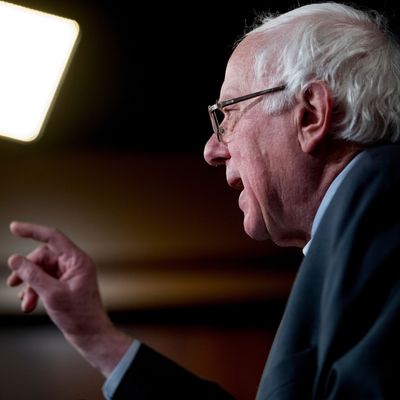
During the waning weeks of the 2008 Democratic primary, a time when the front-runner is usually coasting on the momentum of victory, something unusual happened. White working-class voters instead flocked to Hillary Clinton, the doomed runner-up. Clinton won the Ohio primary by 10 points, Kentucky by 35, West Virginia by 40.
And while Obama’s eventual triumph in November soothed the party’s frayed nerves, the panic returned during eight years (and especially two midterm setbacks) when the Democratic base seemed to be shrinking to what a Clinton adviser had prophetically dismissed as “eggheads and African-Americans.” In Obama’s vanquished foe, who saw her popularity soar into the 70s, they saw the remedy.
“Where I think Secretary Clinton has more appeal than any other Democrat looking at running is that with white working-class voters, she does have a connection,” a Clinton adviser told Talking Points Memo. William Winter, the former Democratic governor of Mississippi, told CNN. “Bill and Hillary Clinton are part of the South. They understand the South and they understand the use of political strategies that will bring people in. They are moderate people, and most people in the South are moderate.”
Needless to say, it did not work out this way. And now the hopes for the party’s white working-class revival have settled on the candidate Clinton herself vanquished: Bernie Sanders.
The Sanders campaign has circulated a strategy memo proclaiming their candidate would compete with Trump not only in Michigan and Ohio but even in states like West Virginia, Kansas, North and South Dakota, Nebraska, Oklahoma, and Montana. Sanders “is popular with traditional, working-class, industrial workers in those places,” asserts his adviser, Jeff Weaver. “Bernie Sanders,” raves Bhaskar Sunkara, “is the only one capable of reaching millions of working Americans with the message that politics can indeed improve their lives.”
Their evidence is the persistent support Sanders amassed during his struggle against Clinton. But there is something eerily familiar about the pattern of Sanders’s support in 2016. Nate Silver, diving into the numbers, finds that about a quarter of Sanders voters were what he calls “Never Hillary” voters. They leaned conservative, and many of them voted for Donald Trump in the general election.
Dan Hopkins found something similar in 2016. The Sanders vote closely matched other protest votes against the Democratic Party’s standard-bearer. Sanders cleaned up among the same voters in 2016 that Clinton herself won with eight years before. Both votes represented protests against the Democratic Party by voters who had either left the party or had never been in it in the first place. Sanders 2016, like Clinton 2008, ran up the score in the garbage time of the primary by winning voters who had no real attraction to them.
How big a factor was the Never Hillary vote for Sanders? Pretty big. They made the difference in eight of the states he won, finds Silver. Without that protest vote, the entire narrative of Sanders as the rising voice of the party’s authentic base would never have taken hold. And that basic misreading of the data created the foundation for a flourishing socialist dream that the American white working class is poised to turn against neoliberalism if only presented with a pure and sharp enough critique.
Ironically, Sanders supporters have made the same analytic error the Clinton fans made after 2008. They looked at their growing strength among the white working class and saw a future base they could pry away from the GOP, never realizing that the only reason those voters had ever supported them was that they had already lost.






























